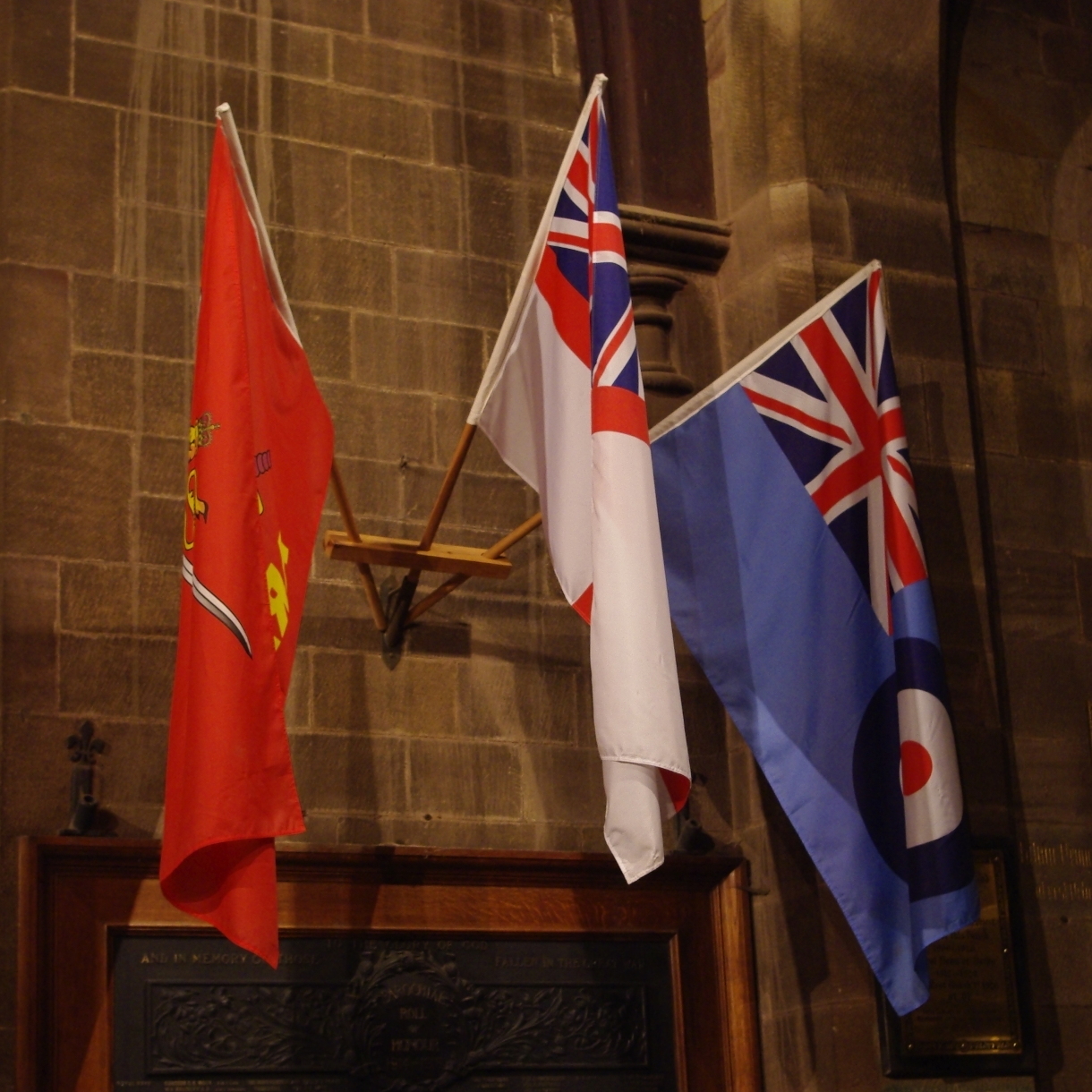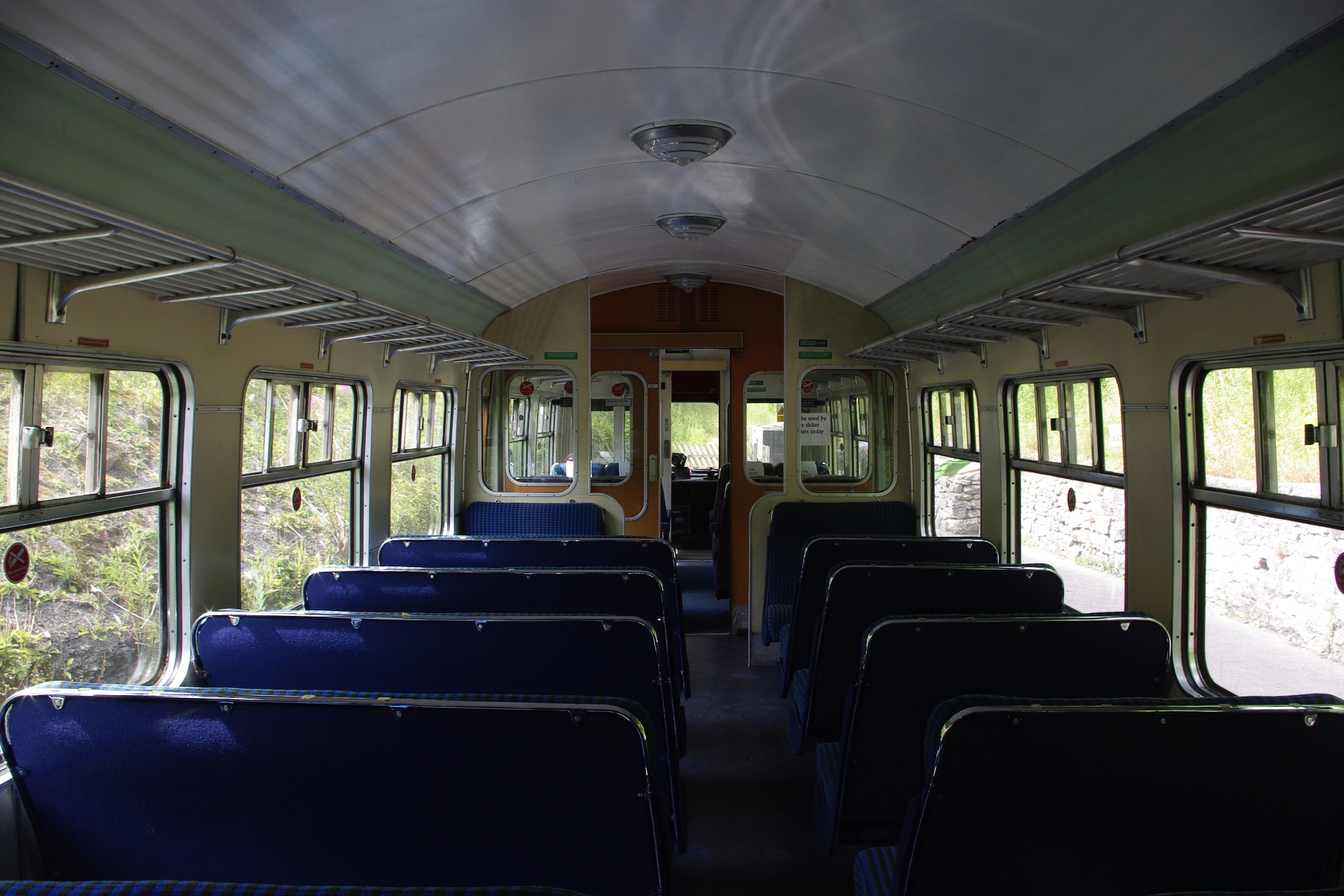 If you take a picture using a wide-angle lens (or a zoom lens set at a short focal length) objects close to the camera will appear much larger than those further away. This gives a great sense of perspective – the perceived arrangement of objects in three dimensions, even though the viewed image is simply on a flat surface. This effect has, I think, worked quite well in this shot of the interior of a beautifully preserved diesel railcar, kept at the Ecclesbourne Valley Railway at Wirksworth, Derbyshire.
If you take a picture using a wide-angle lens (or a zoom lens set at a short focal length) objects close to the camera will appear much larger than those further away. This gives a great sense of perspective – the perceived arrangement of objects in three dimensions, even though the viewed image is simply on a flat surface. This effect has, I think, worked quite well in this shot of the interior of a beautifully preserved diesel railcar, kept at the Ecclesbourne Valley Railway at Wirksworth, Derbyshire.
You can often see this technique used on published pictures of landscapes, where objects in the foreground give powerful interest and punch to what might otherwise be a much less interesting shot.
Category Archives: Alphabet Project
Alphabet Photography Project: O is for Orange
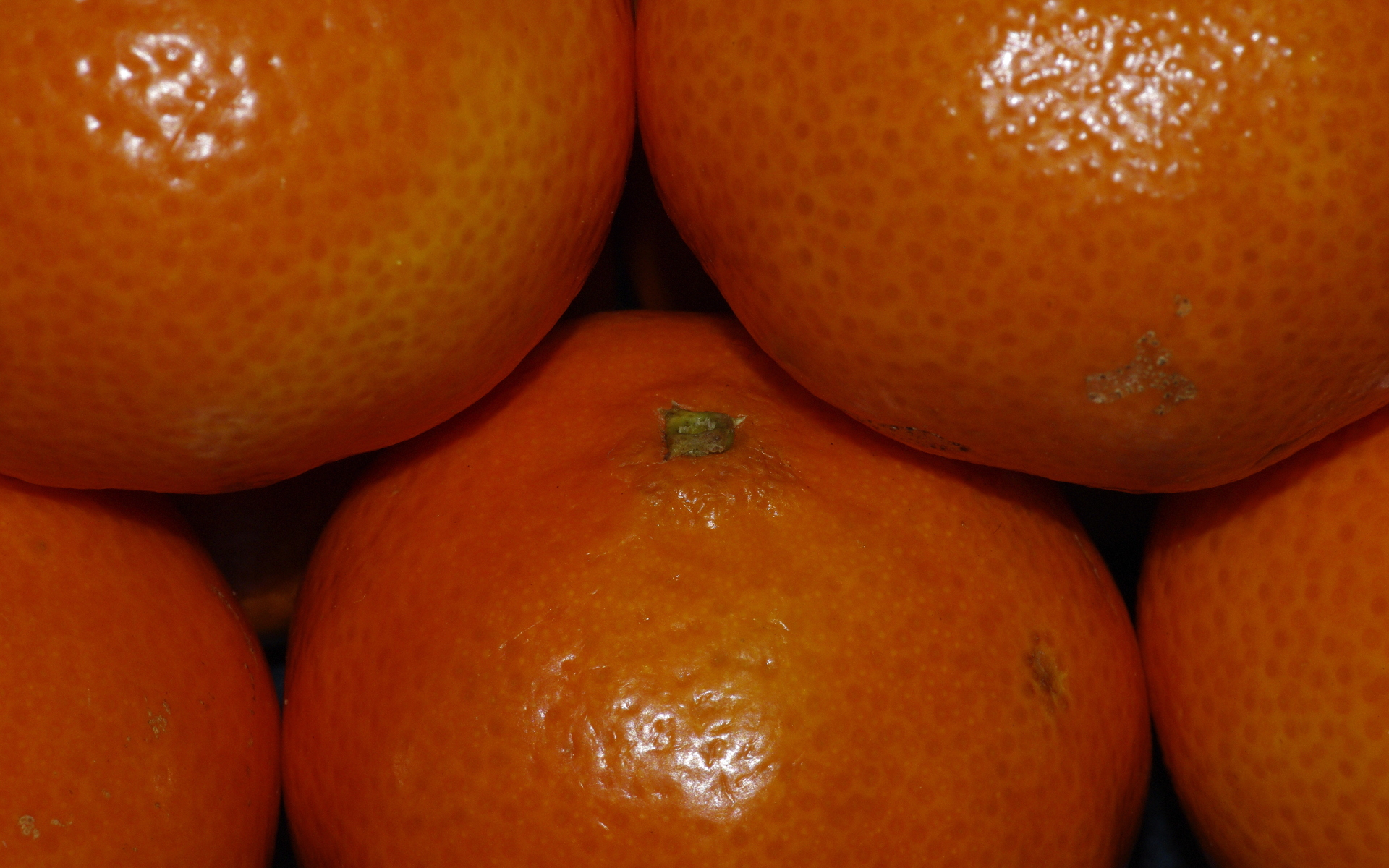 OK, so these are clementines, not oranges, but I’m thinking of the colour orange. The real point I’m making in this photo is that monochrome doesn’t have to necessarily mean black and white; any colour can be chosen to dominate a picture, with interesting effects. Here, the absense of variety of colour leads the eye to study the patterns caused by texture, instead.
OK, so these are clementines, not oranges, but I’m thinking of the colour orange. The real point I’m making in this photo is that monochrome doesn’t have to necessarily mean black and white; any colour can be chosen to dominate a picture, with interesting effects. Here, the absense of variety of colour leads the eye to study the patterns caused by texture, instead.
Alphabet Photography Project: N is for Nostalgia
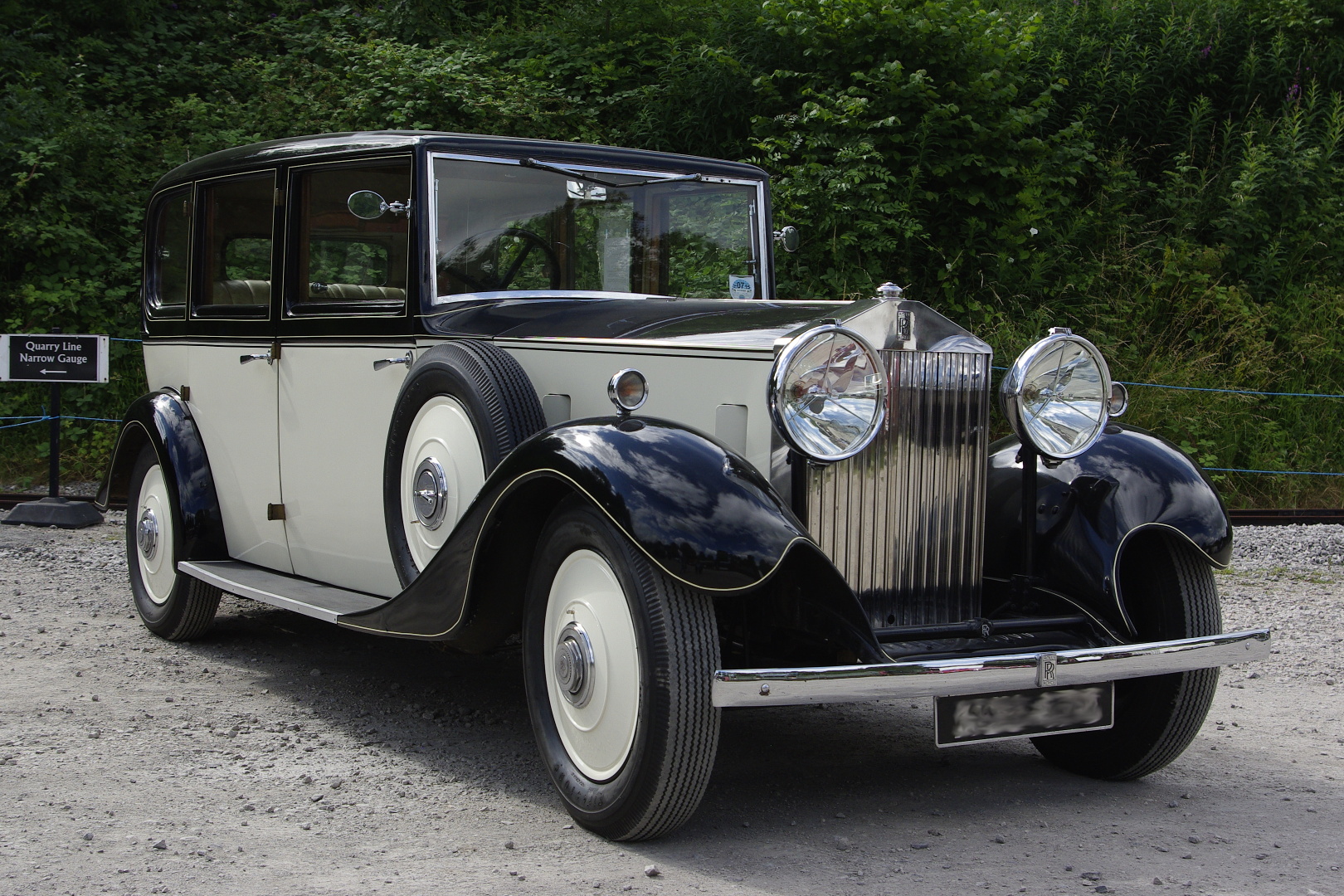 Some of you will already know my passion for all things heritage and also for good engineering. When these themes combine, that wistful feeling comes over me…
Some of you will already know my passion for all things heritage and also for good engineering. When these themes combine, that wistful feeling comes over me…
This picture of a beautiful old Rolls-Royce was taken at a special event this past summer, at the Ecclesbourne Valley Railway. I settled on this shot, out of a whole lot of pictures of old vehicles of all kinds, some of which I well remember being a common sight – but that’s enough of that…
Alphabet Photography Project: M is for Mechanism
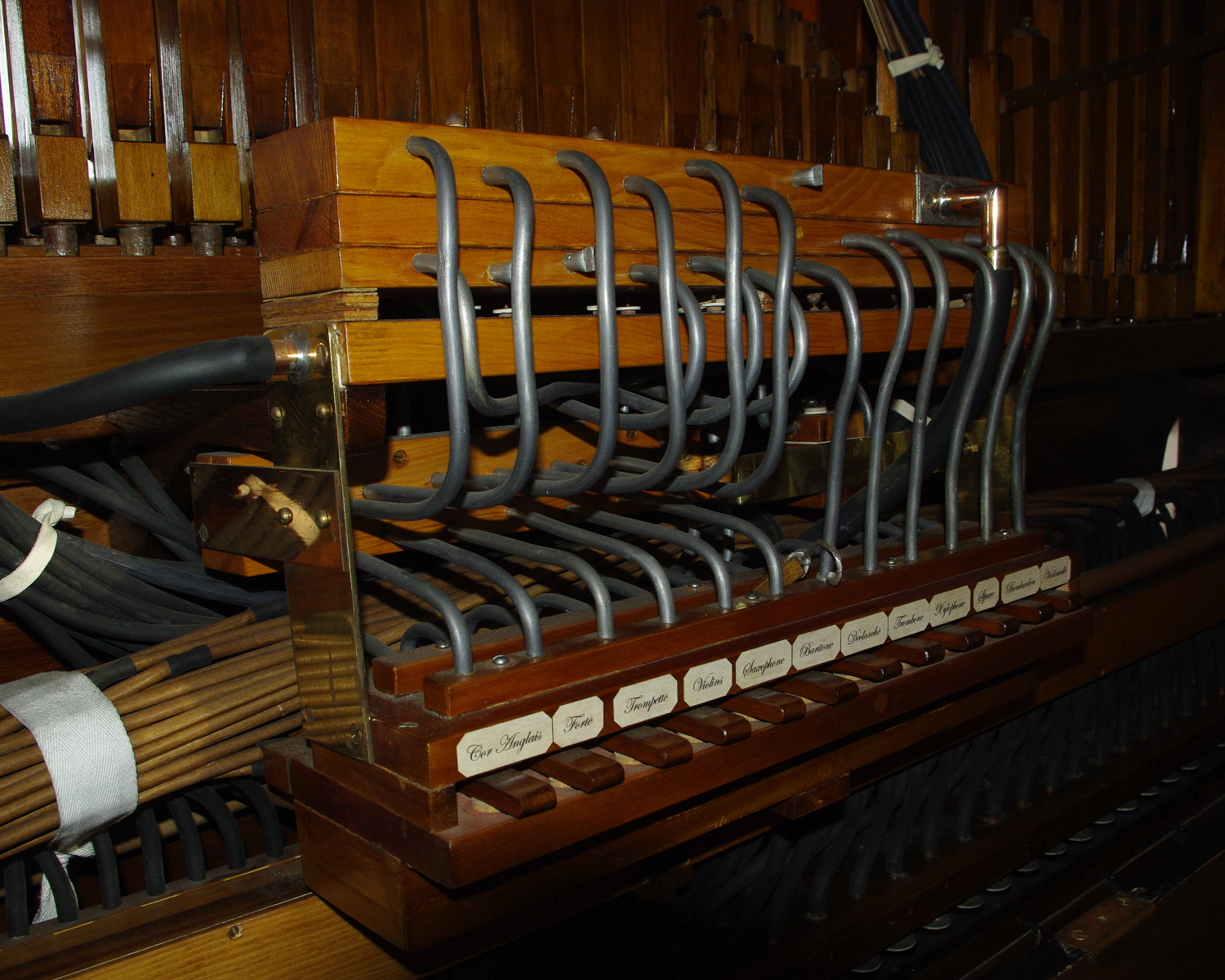 …Or machinery. Or Mechanical Music. This picture is a view into the working parts of a Gavioli fairground organ, built in 1902 – well over a century ago, and computers (as we know them) a long way from being invented!
…Or machinery. Or Mechanical Music. This picture is a view into the working parts of a Gavioli fairground organ, built in 1902 – well over a century ago, and computers (as we know them) a long way from being invented!
A piece of ‘sheet music’ for an organ like this comprises a large number (a hundred or more would not be unusual) of rigid cardboard plates, joined together in one enormous ‘zig-zag’ which is carried through a system of rollers and guides as the music plays. These plates have on each of them a pattern of holes, similar to those in pianola music. These holes control a very complex pneumatic system!
It would be hard to put a value on a restored organ of this kind, together with a large collection of music, and to restore one, and then regularly display it at shows, has to become a way of life for the owner.
The front of this instrument is typical; it is beautifully ornamented and decorated, complete with delicately carved wooden figures that dance in time to the music!
If you have any heart for engineering, or music, or especially both, look over one of these instruments if you ever get the chance. Find out if any are displayed near to where you live!
This post continues my involvement in the Alphabet Photo Project.

Alphabet Photography Project: L is for Light…
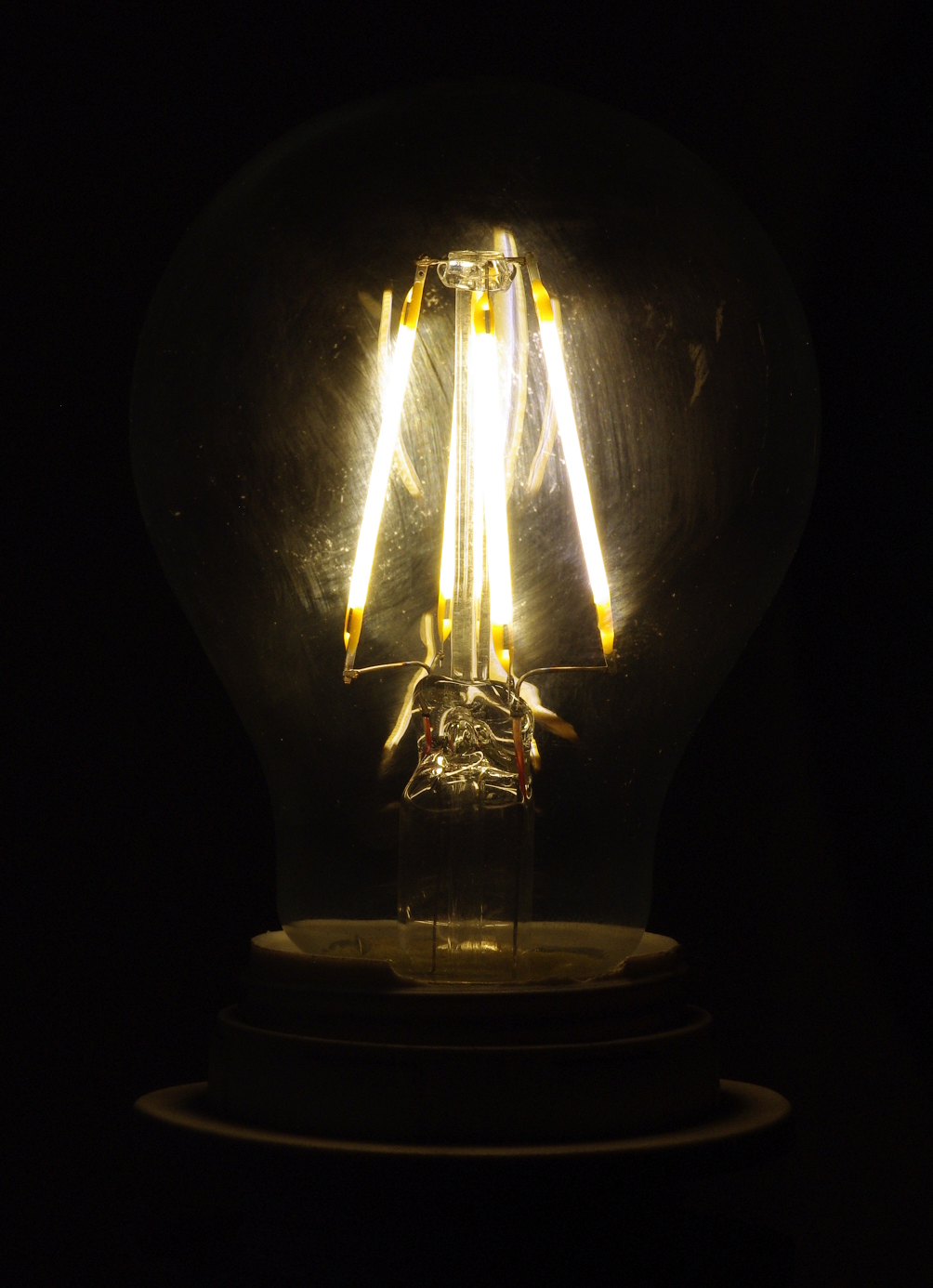 …And, particularly, the light emitting diode, or LED, the marvel that is causing a revolution in all kinds of lighting. Homes, offices, shops, factories, car parks and many more situations are benefiting from the long life and amazing energy savings that this technology brings. Although commercial use of electro-luminescence is not new, The white LED as we know it has only been around for around twenty years – and was prohibitively expensive, to begin with.
…And, particularly, the light emitting diode, or LED, the marvel that is causing a revolution in all kinds of lighting. Homes, offices, shops, factories, car parks and many more situations are benefiting from the long life and amazing energy savings that this technology brings. Although commercial use of electro-luminescence is not new, The white LED as we know it has only been around for around twenty years – and was prohibitively expensive, to begin with.
The LED lamp in this picture is of the so-called ‘LED filament’ type, and at first glance resembles the first electric lamps made by Joseph Swan and Thomas Edison. The background looks black because the exposure has been optimised for clear portrayal of the LED filaments inside the outer bulb. In use, however, when inside a shade, it’s hard to tell the difference, in terms of light quality and colour appearance, between these lamps and traditional tungsten lamps – but they use around 10% of the energy!
Oh, and another key feature: at switch-on, full output from an LED lamp is virtually instant, in contrast with some types of fluorescent lamp, which leave you in the gloom for around a minute after starting, giving you plenty of opportunity to trip over some discarded toys, or whatever!
Mr Swan’s invention has done us well, for almost 140 years. Now, it’s time to move on.
Alphabet Photography Project: K is for Kalanchoe
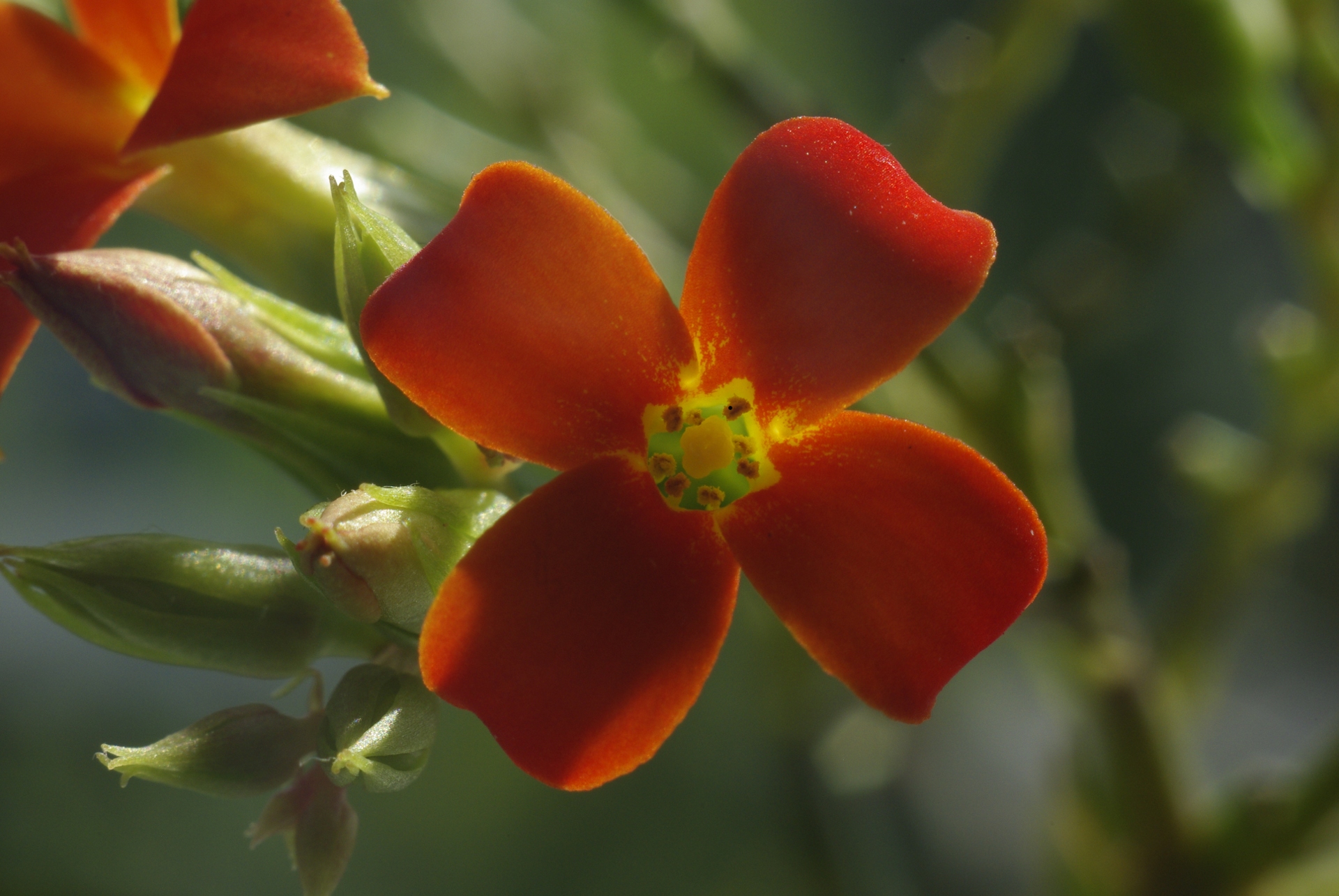 Around this time of year, when not many garden flowers are in bloom, these tiny flowers, often sold as pot plants, can bring welcome colour to a window-sill. They also make a great subject for macro photography – each individual flower is barely 10 mm in size!
Around this time of year, when not many garden flowers are in bloom, these tiny flowers, often sold as pot plants, can bring welcome colour to a window-sill. They also make a great subject for macro photography – each individual flower is barely 10 mm in size!
This post is part of my continued participation in the Alphabet Photography Project.
It's kind to share!Alphabet Photography Project: J is for Joke
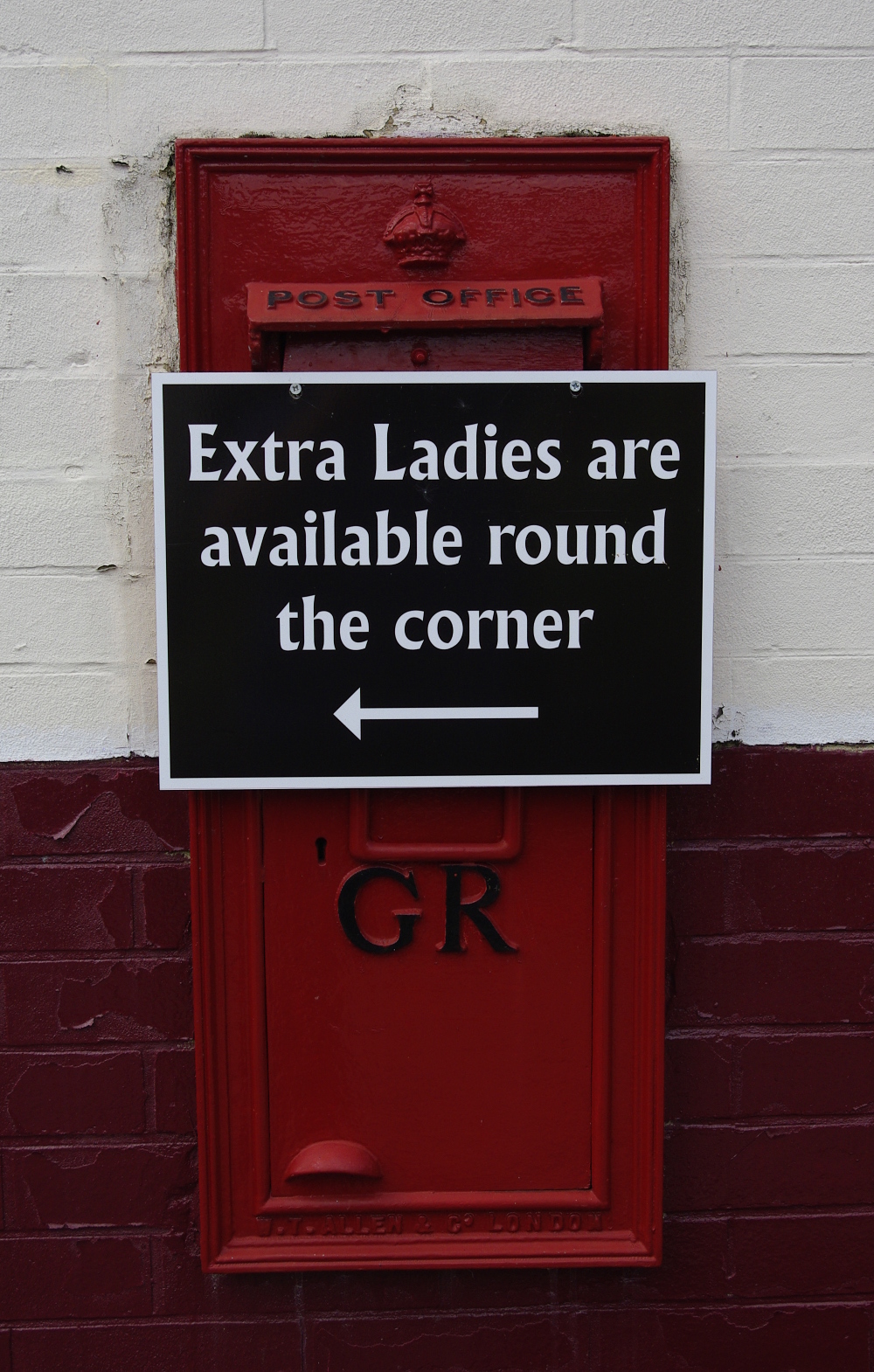 At the heritage railway not far from where I live, the toilet facilities at the main station, while more than adequate during most of the hours when the station is open to the public, are apt to be insufficient on ‘event days’ rendering additional provisions necessary. One member of the management team has his own particular brand of humour, hence the sign in the photograph.
At the heritage railway not far from where I live, the toilet facilities at the main station, while more than adequate during most of the hours when the station is open to the public, are apt to be insufficient on ‘event days’ rendering additional provisions necessary. One member of the management team has his own particular brand of humour, hence the sign in the photograph.
(I have also heard references to ‘spare gentlemen’ although I’ve never seen a corresponding sign.)
This post is part of my continued involvement with the Alphabet Photo Challenge.

Alphabet Photography Project: I is for Insect
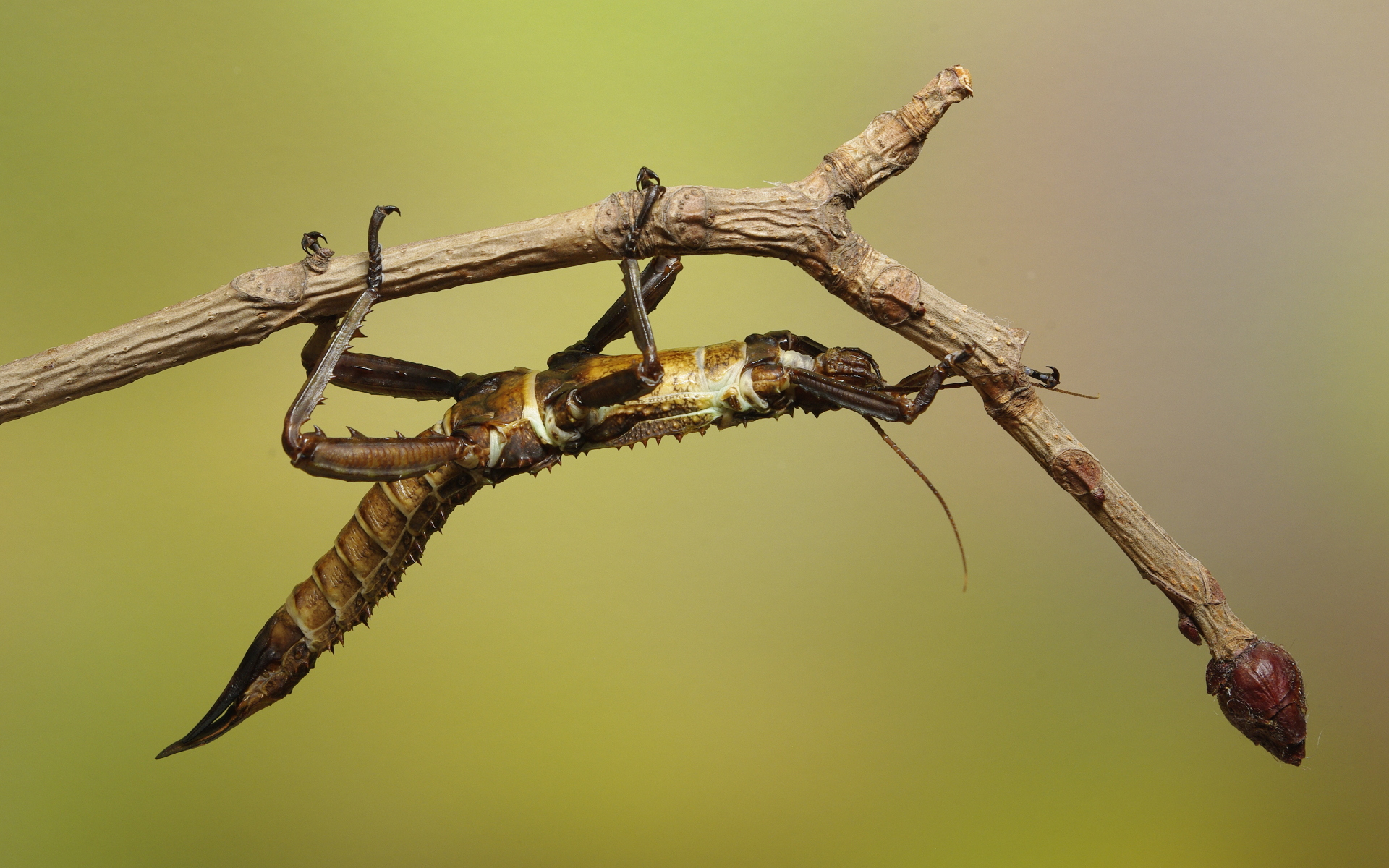 As I’ve already mentioned, I recently had a terrific opportunity to photograph some amazing insects, many of them possessing the most marvellous camouflage. Here is another example – I’m afraid I can’t give you its exact name, right now. A most useful characteristic of many of these insects (from a photographer’s point of view) is that they don’t move around all that fast; their camouflage, rather than their speed, is their main defence.
As I’ve already mentioned, I recently had a terrific opportunity to photograph some amazing insects, many of them possessing the most marvellous camouflage. Here is another example – I’m afraid I can’t give you its exact name, right now. A most useful characteristic of many of these insects (from a photographer’s point of view) is that they don’t move around all that fast; their camouflage, rather than their speed, is their main defence.
For this photo, I used a separate flashgun, fitted with a home-made light diffuser, to simulate a sunlit day.
Alphabet Photography Project: G is for Glass
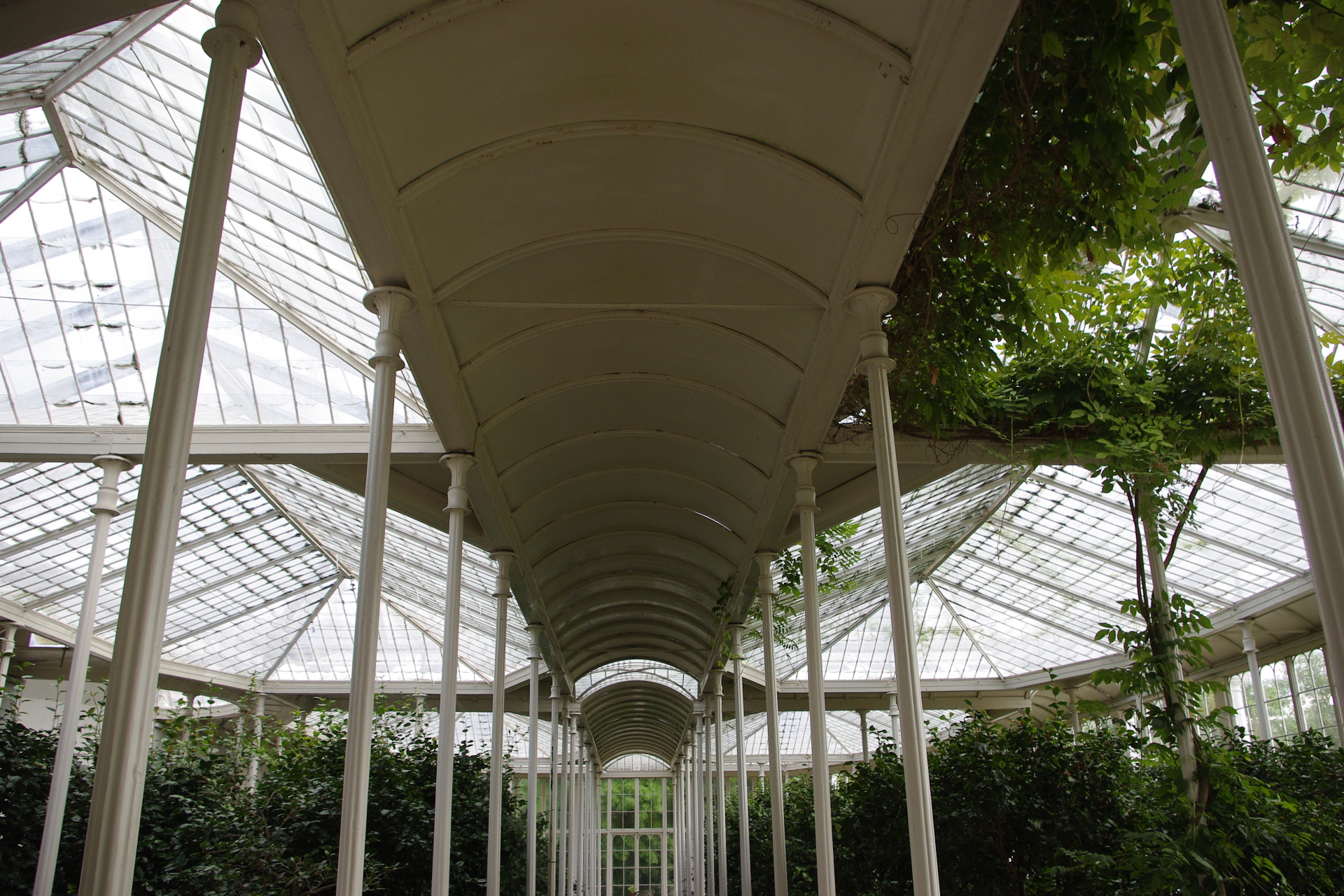 A large proportion of glass in architecture, whether old style or modern, is often fascinating. Here, we are back again to my beloved Wollaton Park, Nottingham. This is the view looking up at the roof of the Camellia House, set in the grounds. One of the earliest cast iron glasshouses of its kind, it was built in 1827. It has recently been extensively restored, and is still used for its original purpose.
A large proportion of glass in architecture, whether old style or modern, is often fascinating. Here, we are back again to my beloved Wollaton Park, Nottingham. This is the view looking up at the roof of the Camellia House, set in the grounds. One of the earliest cast iron glasshouses of its kind, it was built in 1827. It has recently been extensively restored, and is still used for its original purpose.
Buildinds such as this one provide a wonderful display of shape and line – a photographer’s paradise!
This post continues my contribution to the Alphabet Project:


